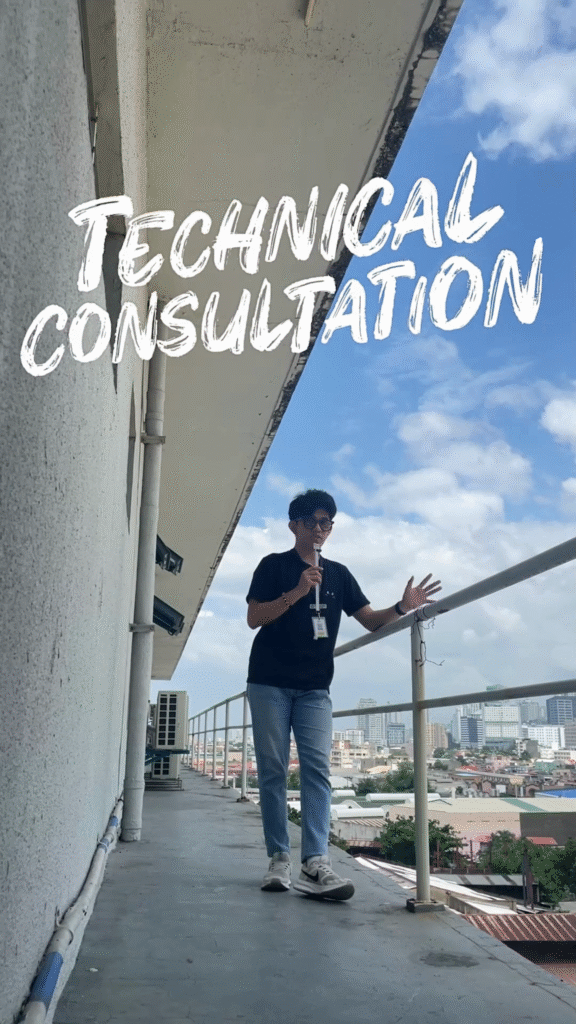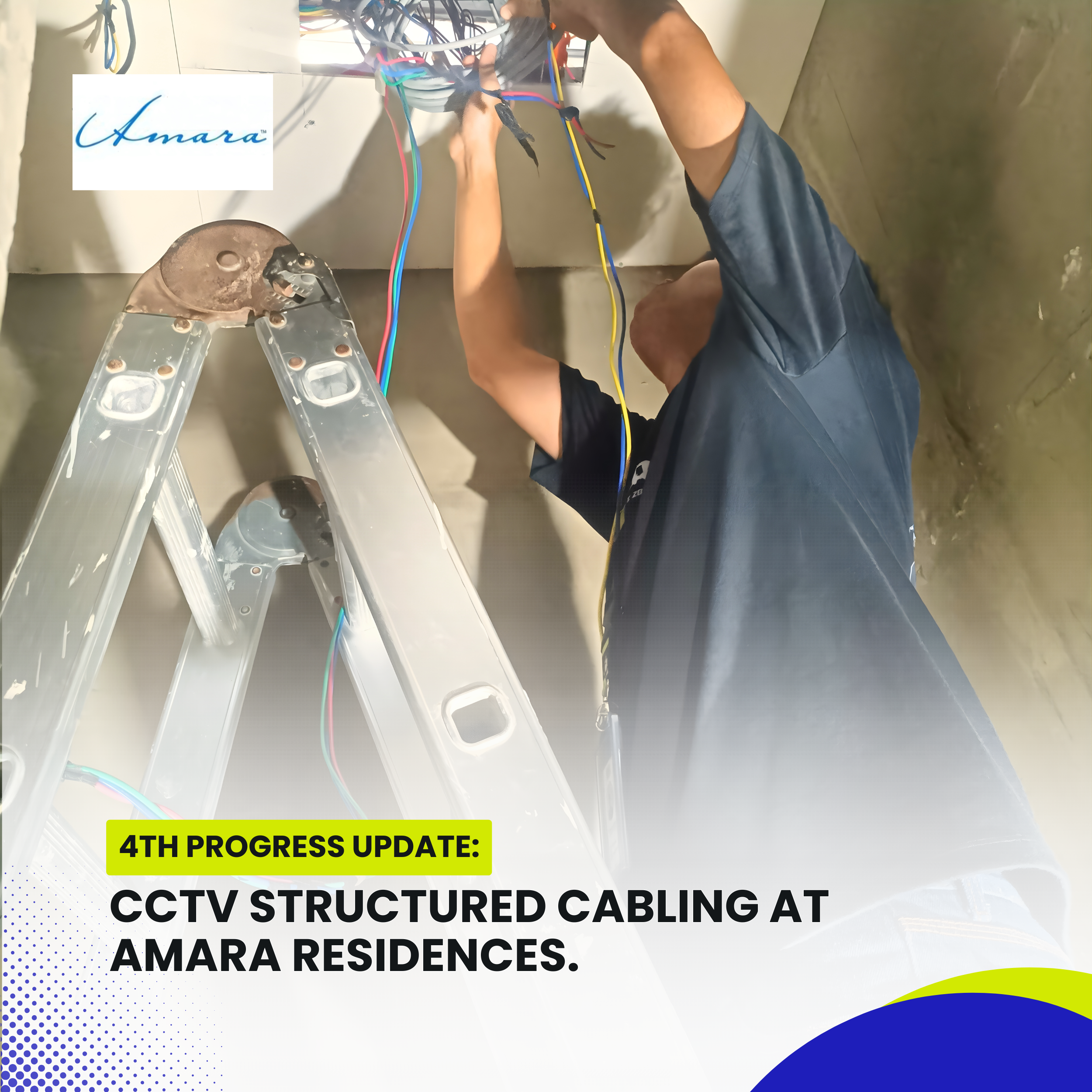AccessPoint Supply and Installation at Santo Niño Village-Final Progress Update. Introduction. Reliable wireless connectivity is essential in today’s homes, supporting daily communication, work, and entertainment needs. To ensure stable and extended network …
Importance of Site Inspection and Technical Consultation.

Introduction
In the world of surveillance and security, no two business sites are ever the same. Whether it’s a cozy office space, a bustling restaurant, or a vast warehouse, each environment presents unique challenges that demand tailored solutions. One of the most critical—yet often overlooked—steps in building an effective CCTV system is the site inspection.
To better understand its importance, we conducted a series of office interviews with our team of seasoned IT technicians. The insights they shared reinforce why site inspections aren’t just beneficial—they’re essential to the success of any CCTV installation project.
Video Overview.
Setting the Foundation: What Happens During a Site Inspection?
A CCTV site inspection is the first technical step in any serious security deployment. It involves visiting the physical location to gather real-world data about the space, layout, lighting conditions, wiring routes, and potential blind spots.
Our technicians emphasized that during inspections, three major things are accomplished:
Strategic Camera Placement – Knowing where to place cameras is not guesswork. It depends on the layout, entry and exit points, high-risk zones, and environmental conditions (e.g., outdoor exposure, lighting variations).
Accurate Material Assessment – From cable length to camera quantity and mounting hardware, every detail must be accounted for.
Proposal Preparation – A detailed inspection allows our team to create a professional and transparent proposal, complete with pricing and a full list of required components.
Smart Placement = Smart Surveillance.
According to our interviews, one of the main benefits of an on-site visit is determining optimal camera placement. Technicians look at:
Entrances and Exits – The most critical areas for monitoring foot traffic.
Cash Registers or Transaction Points – Vital for businesses handling money.
Blind Spots – Corners or shadowed areas not visible from existing coverage.
Outdoor Spaces – For properties like farms, resorts, or parking areas.
Our team shared that improper camera placement is one of the top reasons clients return asking for adjustments—usually due to skipped inspections in DIY setups. Site inspections help eliminate this risk by planning ahead, using professional insight, and positioning cameras to maximize both coverage and clarity.
Understanding Material Needs: Every Meter Counts.
Beyond positioning cameras, our interviews revealed that estimating materials is another key outcome of site inspections. This includes:
Number of Cameras Required.
Total Cable Lengths (Power & Data).
Cable Pathways and Conduit Requirements.
Type of Mounting Hardware.
Power Supplies.
Switches and Network Equipment (for IP-based systems).
During inspections, our team measures actual distances between devices and sources, counts the number of floors or partitions that might affect installation, and factors in electrical routing. This allows us to avoid over- or under-purchasing materials, which not only controls costs but also keeps the installation efficient and clean.
The Proposal Process: Transparent and Professional.
Once the inspection is done, our technicians return with a comprehensive understanding of the client’s environment. This information feeds directly into the creation of a proper proposal.
A standard CCTV proposal includes:
List of Materials – Each item clearly named (e.g., 4MP dome camera, RG59 coaxial cable, 12V DC adapter, DVR/NVR, conduits, junction boxes).
Quantity – Based on actual on-site measurements.
Unit Prices – To help clients understand costs per item.
Labor and Service Fees – Optional if requested as a full turnkey package.
Installation Timeline – Based on the size and complexity of the site.
System Layout or Sketch – Often attached to visualize coverage areas.
Our office interviews emphasized that clients are more likely to approve and trust proposals when they’re data-driven—something only a site inspection can provide. A generic quote without proper inspection leaves room for error, missed components, or surprise costs later on.
Requirements From the Client: Clarity is Key.
To generate a technically sound proposal, the team also shared the minimum information clients should provide before or during the site inspection. This includes:
Scope of Work – How many areas or floors are to be covered?
Business Type – Helps determine resolution needs (e.g., 2MP vs. 4MP).
Internet Availability – Crucial for remote viewing capabilities.
Power Source Locations – For camera and system placement.
Mounting Preferences – Surface or ceiling mount? Visible or hidden?
Any Specific Brand Preferences – For cameras or recorders.
Providing this information helps the team perform an even more effective inspection. It also reduces back-and-forth communication and streamlines project approval.
Why Technical Consultation is Recommended Before Launching a Business?
One standout insight from our interviews was a recommendation that site inspections and technical consultations be done even before launching a new business.
Starting a restaurant, building a warehouse, or converting a home into a lodging facility? Having our technicians visit during the construction or pre-launch phase allows for future-proofing your security system. You can:
Plan cable routes while walls are open.
Integrate power sources into construction.
Pre-install conduits and junction boxes.
Avoid major renovation costs later on.
Early consultation also allows our team to advise on system scalability, recommending how many channels your DVR/NVR should support in case of future expansion. It’s smarter, cleaner, and ultimately more cost-effective.
Real-World Results: No Surprises, No Missed Corners.
Our technicians shared countless stories where clients were shocked at the level of detail gathered from a single site inspection. In one case, a resort client believed they only needed six cameras. After inspection, it was revealed that 10 cameras were necessary to achieve full perimeter coverage—something that could not have been seen from blueprints alone.
Another client, a retail store, underestimated their cable needs by nearly 40 meters. The inspection prevented project delays and unexpected material costs.
Conclusion
From accurate placement to detailed budgeting, CCTV site inspections are the foundation of every successful security project. They ensure that your proposal reflects real-world conditions, your materials are precisely counted, and your system performs exactly as intended.
Our interviews made it clear: skipping the site inspection is a shortcut that leads to future problems. Whether you’re enhancing an existing system or preparing to open a brand-new business, consult with professionals early—and inspect before you invest.
Case Studies
CCTV Site Inspection at Guadalupe, Nichols Park subdivision. Introduction. Ensuring the reliability and performance of surveillance systems is essential in maintaining safety and security within residential communities. On this day, InstallersPH IT …
CCTV Structured Cabling at Amara Residences- 4th Progress Update.
CCTV Structured Cabling at Amara Residences- 4th Progress Update. Introduction. The fourth progress milestone of the project focuses on the installation and configuration of the network infrastructure within the client’s facility. With …

